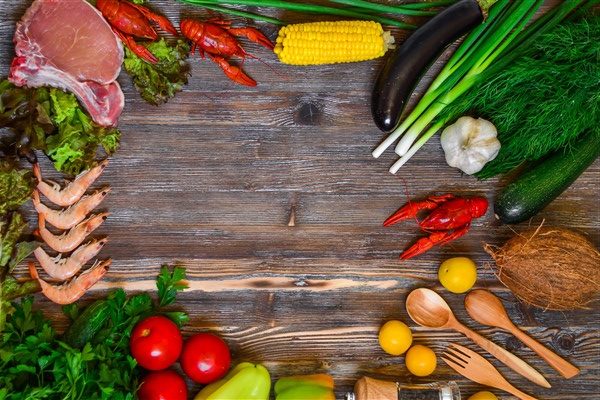Have you ever heard the term, “You are what you eat?” Well, it just happens to be true, quite literally. We eat carbohydrates (carbs), proteins, and fats, and we drink water.
And when we break down the human body into its constituent parts, it would basically look like something like this:
- 65 % Water
- 16 % Protein(muscles, skin, hair, tissue, and organs),
- 14 % Fat, (energy storage)
- 4 % Minerals (calcium, phosphorus, iron)
- 1 % Carbs (immediate energy)
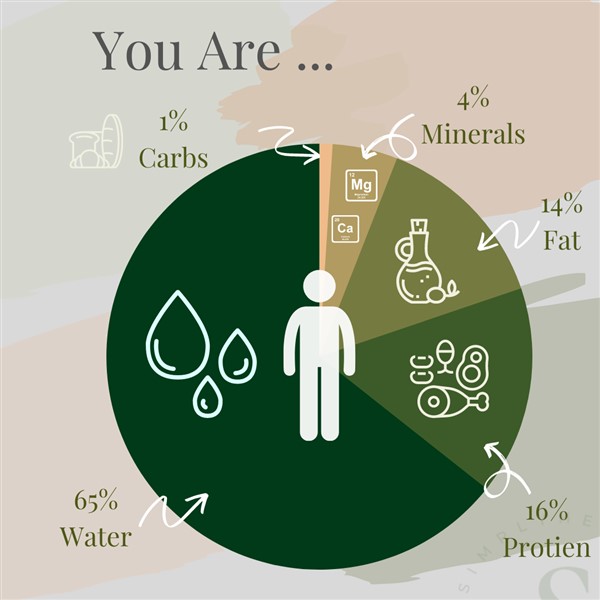
Macronutrients.
Carbs, proteins, and fats are known as the macronutrients (Macros), which make up most of our diets. Few foods include only one macronutrient. For example, meat has both protein and fat, vegetables are fiber-rich carbs that can also include protein, and chia seeds have all three. If a food source contains only a single macronutrient, it has almost always been extracted. Coconut oil, avocado oil, and olive oil, for example, are all 100% fat. Still, the whole- food (avocado, coconut, or olive) contains various fats, carbs, proteins, and water.
The carbs, proteins, and fats have various nutritional purposes and are utilized, stored, and broken down differently in the body.
Carbohydrates (Carbs)
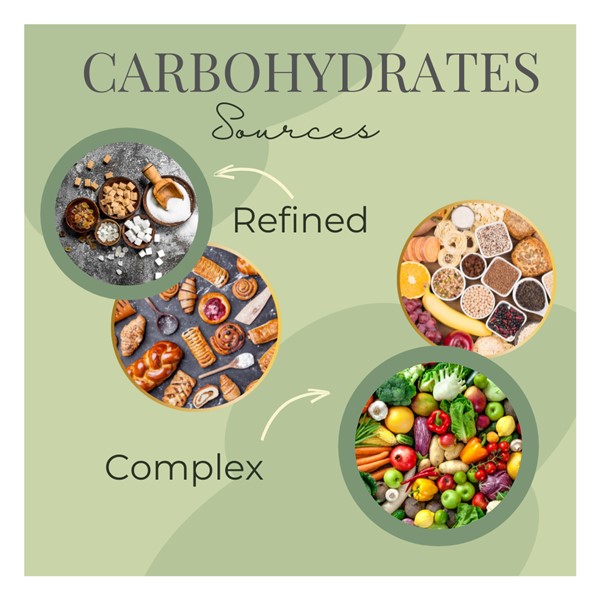
The primary purpose of carbs in our diet is to provide fuel for our bodies. Carbs are our body’s preferred fuel source. Most carbs break down relatively quickly and turn into the body’s energy source, glucose- in other words, sugar. If we don’t need to use up the “sugary glucose energy” right away, we store it for later in the form of fat.
Carbohydrates are divided into two categories, both of which are derived from plants:
(1) Complex carbs: These carbs are more difficult to break down, and the glucose is released over time.
(2) Simple carbs: These carbs are quickly broken down into glucose and give an energy spike.
Complex carbs are found in a wide variety of our whole foods: vegetables, whole grains, potatoes, rice, wheat, corn, and the like.
However, when you think of simple carbs, you should think of sugar (table sugar, honey, jams, soda, and sweets), white bread, pastries, and the like. The sugars are extracted from the original complex carbs (whole food plant) and refined into simple carbs (sugar).
It is wise to limit simple carbs in your diet.
Protein.
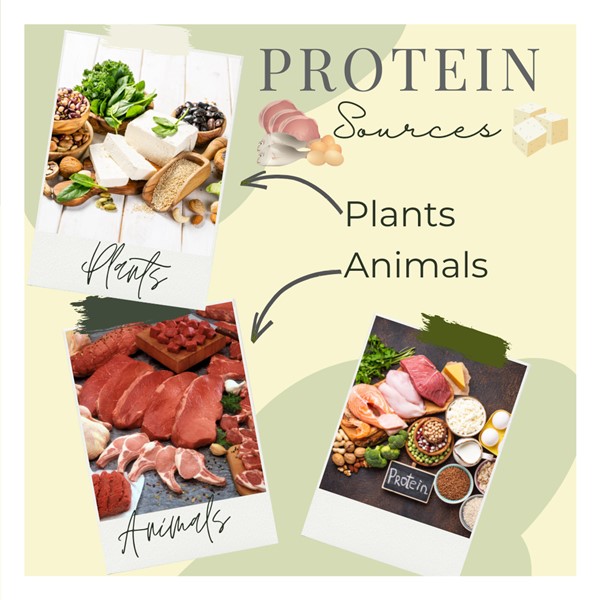
The human body requires twenty-two of what are called “amino acids” to function correctly. Your body can produce thirteen amino acids by itself; the other 9 come from the proteins we eat. These 9 amino acids that our bodies cannot build by themselves are called “essential amino acids.” We must obtain these from plant or animal sources.
Proteins are known as the building blocks of our bodies. They are necessary for the growth, maintenance, and repair of virtually every part of the body. Proteins give our tissue and organs shape. It is essential for growing muscle, bone, skin, and hair. They help mend us when we are hurt and protect us from bacteria and infection when we are sick. Proteins help us breathe and carry oxygen around the body. They assist in the thousands of chemical reactions that take place in our cells that keep us alive. They aid in the communication between our brains and our cells, tissue, and organs. And they provide us energy when we run low.
Sources of Protein:
Animal proteins (such as chicken, beef, fish, and dairy products) contain all 9 of the essential amino acids. They are referred to as complete proteins.
Plant proteins (beans, lentils, nuts, and whole grains) are considered ‘incomplete’ because they lack at least one of the essential amino acids.
To ensure that you get all 9 essential amino acids from plant proteins, you must choose various protein sources.
Fats.
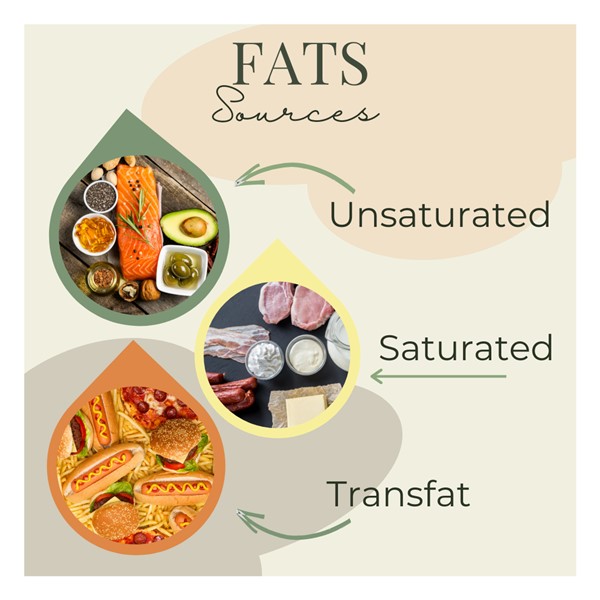
Of the 3 macronutrients that we consume, fats have a fearsome reputation and cause the most confusion. A lot of us will immediately associate fats with weight gain. Let’s try to clear up the fear and the confusion.
We eat Fats, but we store Fat.
We have evolved to eat different kinds of fats; not only do fats taste good, we need fats to maintain a healthy functioning body. Fats are broken down into various “fatty acids” necessary for energy production, hormone creation, cell formation, and growth.
We have also evolved to store the excess energy from the foods we eat as body fat, not fats. For example, if we eat extra carbs and do not need to burn the energy right away, the body will convert the excess carbs to fat and store it for later use.
Our bodies have evolved to deposit excess fat in the abdomen and under the skin to use when we need more energy, a kind of “gas tank” if you like. In extreme cases of energy storage, and the gas tanks are full, the body may also deposit excess fat in blood vessels and within organs.
The Good, The Bad, and the Ugly of Fats.
Avocados, fatty fish (salmon, trout, mackerel, sardines, and herring), olive oil, coconut and coconut oil, almonds, and chia seeds, are our primary sources of “good” fats. Aka Unsaturated Fats. Healthy fats should be a part of your daily nutritional intake.
While fatty cuts of beef, pork, lamb, dark chicken meat, and poultry skin, dairy- like whole milk, butter, cheese, and lard, are sources of “not so good” fats and should be consumed sparingly. Aka Saturated Fats.
There is a third category of fats. Artificial trans Fats (or trans fatty acids) are created in an industrial process that adds hydrogen to liquid vegetable oils to make them more solid. Trans fats can be found in many processed foods. Including fried foods like french fries, doughnuts, and baked goods such as cakes, pie crusts, biscuits, frozen pizza, chips, cookies, crackers, stick margarine, and other spreads. It would be best if you did not eat them.
If we are what we eat; carbs, protein, and fats, we should fuel our bodies with the highest quality we can find. When we look after our bodies, our bodies will look after us.

